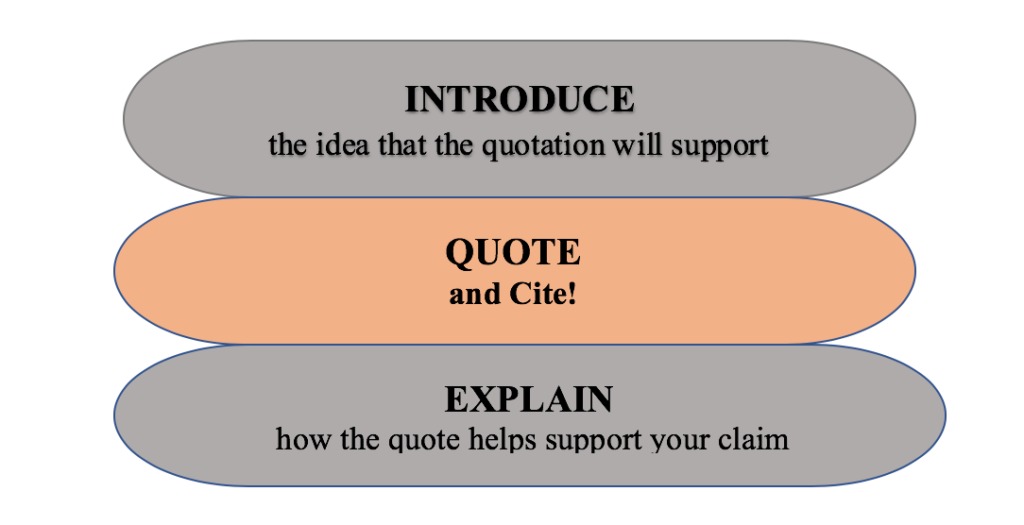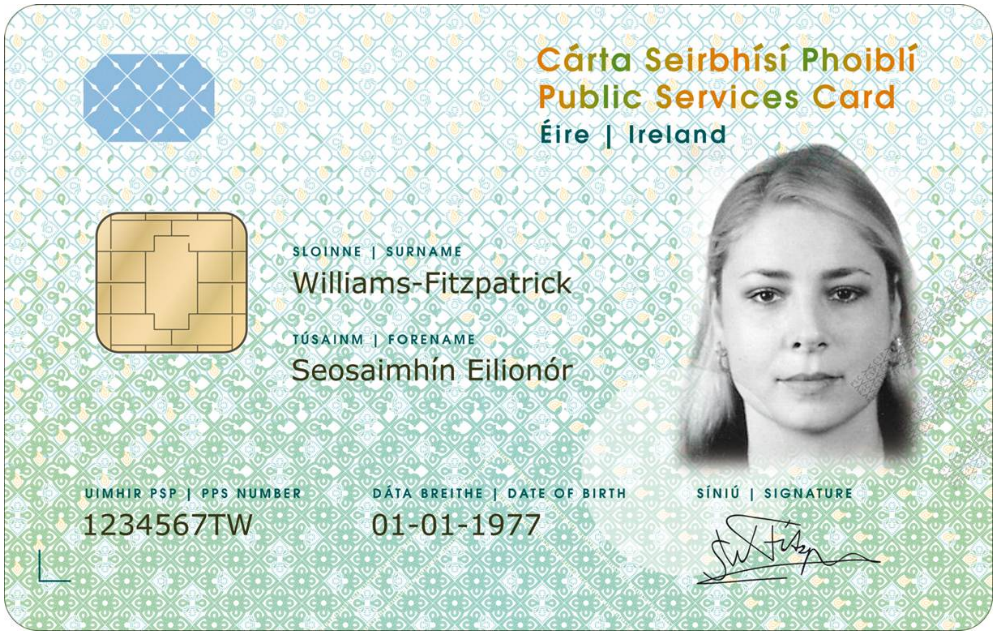Introducing a speaker with poise is more than just a formality; it’s a crucial element in creating a positive and engaging atmosphere for any event. This guide provides a structured approach to crafting compelling introductions, from choosing the right words to mastering nonverbal cues. Whether you’re introducing a renowned expert or a newcomer, this comprehensive resource will equip you with the skills and strategies needed to make a lasting impression.
The guide explores various introduction strategies, delving into the nuances of different styles – from formal to informal – and providing practical examples. It also examines crucial elements such as verbal delivery techniques, effective use of visual aids, and strategies for managing nerves. Ultimately, the aim is to empower you to introduce speakers with confidence and finesse, ensuring a smooth and impactful transition between segments.
Content of the Introduction

A compelling introduction sets the stage for a successful presentation. It captures the audience’s attention, establishes the speaker’s credibility, and provides context for their expertise. A well-crafted introduction can significantly enhance the overall impact of the event. Crafting an effective introduction involves careful consideration of the speaker’s background, the topic, and the desired audience response.Effective introductions are more than just a formality; they are a crucial element in building rapport and anticipation.
They serve as a bridge between the presenter and the audience, creating a welcoming and engaging atmosphere.
Effective Opening Lines
Opening lines are vital for immediately grabbing attention and setting the tone for the presentation. These lines should introduce the speaker’s expertise and unique selling points.
- “Today we have the privilege of hearing from Dr. Emily Carter, a leading expert in sustainable agriculture. Dr. Carter’s groundbreaking research on drought-resistant crops has revolutionized farming practices in the region.” This example highlights the speaker’s specific area of expertise and its practical impact.
- “Please welcome to the stage, Mr. David Lee, the visionary behind ‘InnovateNow,’ a company pioneering innovative solutions for urban transportation. Mr. Lee’s experience in designing sustainable public transit systems will provide invaluable insights.” This opening emphasizes the speaker’s role as an innovator and the practical application of their expertise.
- “Joining us today is Ms. Sarah Chen, a renowned consultant specializing in digital marketing strategies. Her deep understanding of social media trends and her successful track record in increasing brand visibility make her an indispensable resource for today’s discussion.” This introduction focuses on the speaker’s specific expertise and successful outcomes.
Highlighting Experience and Achievements
Demonstrating the speaker’s qualifications is crucial. This builds credibility and showcases their value to the audience. Quantifiable achievements and relevant experience should be incorporated.
- “With over 15 years of experience in project management, Ms. Rodriguez has successfully overseen numerous high-profile projects, resulting in a 20% increase in efficiency across several departments. Her experience in streamlining complex processes will undoubtedly be valuable to our discussion today.” This example provides concrete evidence of the speaker’s accomplishments.
- “Dr. Smith, a recipient of the prestigious ‘Innovator of the Year’ award, has published extensively on the topic of quantum physics. His contributions to theoretical advancements in the field are unparalleled.” This example showcases the speaker’s accolades and significant contributions.
Providing Context for the Topic
Understanding the context of the speaker’s presentation is vital. It allows the audience to grasp the relevance of the topic and understand its broader implications.
- “As the global economy faces increasing challenges, we are fortunate to have Mr. Johnson share his insights into sustainable financial strategies. His expertise in risk management and investment will be crucial in navigating the uncertainties ahead.” This example situates the speaker’s topic within a broader context.
Weaving in a Personal Touch
A brief, relevant anecdote can add a personal touch to the introduction, making the speaker more approachable. However, brevity is key.
- “Before diving into the complexities of AI development, let’s hear from Ms. Chen, whose passion for technology ignited when she built her first computer at age 12. This passion led her to a groundbreaking career in AI.” This example connects the speaker’s personal background to their professional achievements.
Types of Introductions
Different approaches can be adopted depending on the speaker and the desired effect.
| Type of Introduction | Example | Purpose |
|---|---|---|
| Humorous | “We’re thrilled to have Mr. Jones, whose wit and humor are as sharp as his business acumen. His presentation promises to be both insightful and entertaining.” | To create a lighthearted and engaging atmosphere. |
| Inspirational | “Ms. Garcia, a champion of social justice, will inspire us all with her unwavering commitment to equality. Her story of perseverance is a testament to the power of hope.” | To motivate and uplift the audience. |
| Professional | “Please welcome Mr. Patel, a seasoned executive with over 20 years of experience in finance. His expertise in risk assessment and financial modeling will provide valuable insights for our discussion today.” | To present the speaker’s credentials in a formal and professional manner. |
Verbal Delivery Techniques

Delivering an introduction with poise requires more than just words; it’s about conveying confidence and enthusiasm through your entire presentation. Effective verbal delivery techniques ensure the introduction smoothly transitions to the speaker, creating a positive and engaging experience for the audience. This section focuses on mastering the nuances of vocal projection, eye contact, and body language to enhance your introduction’s impact.
Maintaining Effective Eye Contact
Establishing and maintaining eye contact is crucial for creating a connection with the audience and building rapport. It conveys confidence, sincerity, and attentiveness. Direct eye contact with individuals within different sections of the audience, rather than focusing on one point, fosters a more inclusive and engaging introduction. Scanning the room, making brief, meaningful connections with different people, and returning to a central point, ensures the entire audience feels acknowledged.
This technique should be practiced beforehand to feel comfortable and natural.
Projecting Confidence and Enthusiasm
Projecting confidence and enthusiasm in your voice is essential to engage the audience and set the tone for the speaker’s presentation. A strong, clear voice that conveys passion and conviction creates anticipation and interest. Varying the tone and pace of your voice, and using appropriate volume, will prevent monotony and maintain listener engagement. Speak at a moderate pace, allowing the words to resonate.
Pauses can add emphasis and create anticipation.
Positive Body Language Enhancements
Positive body language significantly enhances the impact of your introduction. Open and welcoming postures, like standing tall with relaxed shoulders, project confidence and approachability. Smiling authentically conveys friendliness and enthusiasm. Using gestures that are natural and appropriate for the context reinforces the message and adds visual interest. These techniques should be practiced to appear natural.
- Open Posture: Standing tall with shoulders relaxed and a slight smile projects confidence and approachability. Avoid stiff or closed postures that can appear unapproachable or defensive.
- Authentic Smiling: A genuine smile conveys warmth and enthusiasm. A forced or unnatural smile can seem insincere.
- Appropriate Gestures: Use natural, unobtrusive gestures to emphasize key points. Avoid excessive or distracting movements that can detract from the introduction.
Modulating Tone to Match Event Atmosphere
The tone of your introduction should align with the overall atmosphere of the event. A formal conference demands a more reserved tone, while a casual workshop might allow for a more conversational style. Adjust your tone to match the expectations and energy of the occasion. This adaptability creates a seamless transition from your introduction to the speaker’s presentation.
Verbal Delivery Mistakes to Avoid
| Mistake | Explanation | Solution |
|---|---|---|
| Mumbling or Speaking Too Quietly | Difficult to hear and understand, resulting in a loss of audience engagement. | Speak clearly and at a moderate volume, ensuring everyone in the room can hear you. |
| Speaking Too Fast | Can make the introduction sound rushed and disorganized, causing the audience to miss key information. | Speak at a controlled pace, allowing the words to resonate and create a sense of engagement. |
| Monotonous Voice | Lack of variation in tone, pace, or volume can make the introduction dull and uninteresting. | Vary your tone, pace, and volume to keep the audience engaged and attentive. |
| Reading from a Script (without adapting) | Can sound robotic and disconnected from the audience, leading to a less engaging experience. | Prepare thoroughly, but deliver the introduction naturally. Adapt to the energy and the audience’s responses. |
Handling Nervousness
Introducing another speaker can be a nerve-wracking experience, even for seasoned professionals. Understanding and proactively managing pre-introduction anxiety is crucial for delivering a smooth and confident presentation. This section Artikels strategies to effectively navigate nervousness and project composure, ensuring a seamless transition for both the speaker and the audience.Effective introduction strategies involve more than just reciting prepared words; it requires a calculated approach to manage anxiety.
Acknowledging and addressing pre-introduction nervousness is essential for projecting confidence and establishing a positive rapport with the audience. Implementing techniques for controlling nerves during the introduction, such as breathing exercises and mindfulness practices, is vital for delivering a polished and impactful presentation.
Strategies for Managing Pre-Introduction Anxiety
Effective pre-introduction preparation involves proactive steps to reduce anxiety. Understanding the source of nervousness allows for tailored strategies. Analyzing past experiences and identifying triggers can aid in creating a more comfortable introduction process. Recognizing and addressing potential anxieties associated with the speaker, the introduction itself, or the environment is paramount. This analysis allows for targeted pre-introduction activities to alleviate these concerns.
Techniques for Staying Composed During the Introduction
Maintaining composure during the introduction is essential for a successful presentation. Visualizing a positive outcome and focusing on the speaker’s strengths and accomplishments can bolster confidence. Using positive self-talk and affirmations can reinforce a sense of preparedness and calm. Deep breathing techniques and mindfulness practices can center the individual, providing a foundation for a steady and confident introduction.
Breathing Exercises and Mindfulness Practices
Breathing exercises are proven methods to manage anxiety. Techniques such as diaphragmatic breathing, where the abdomen expands with each inhalation, can calm the nervous system. Mindfulness practices, which involve focusing on the present moment without judgment, can also help manage stress and promote a sense of calm. Regular practice of these techniques, even for a few minutes before the introduction, can establish a sense of grounding and control.
Rehearsing the Introduction
Rehearsing the introduction is crucial for building confidence and fluency. Practicing the introduction aloud, preferably in front of a mirror or with a trusted friend, helps identify and address potential areas of improvement. This practice allows for smoother transitions and better delivery. Rehearsing allows for adjustments to timing, word choice, and tone, leading to a more natural and confident presentation.
Comparison of Methods for Overcoming Nervousness
| Method | Description | Advantages | Disadvantages |
|---|---|---|---|
| Visualization | Mentally rehearsing a successful introduction | Reduces anxiety, builds confidence | Requires practice and mental discipline |
| Positive Self-Talk | Using affirmations to reinforce confidence | Motivates, improves self-perception | May not be effective for all individuals |
| Breathing Exercises | Techniques to calm the nervous system | Immediate calming effect, easily learned | May require practice to become effective |
| Mindfulness Practices | Focusing on the present moment | Reduces stress, improves focus | Requires dedicated practice for optimal results |
Adapting to Different Audiences
Introducing a speaker effectively involves more than just a few well-chosen words. It requires a nuanced understanding of the audience, the event, and the speaker themselves. A successful introduction resonates with the listeners, setting the stage for a compelling presentation and fostering a positive connection between the speaker and the audience.Effective introductions must be adaptable to various situations and contexts.
This includes tailoring the introduction to the audience’s demographics, the specific event, the speaker’s personality, cultural sensitivities, and other pertinent factors. Understanding these variables allows the introducer to create a warm, welcoming, and impactful experience for everyone.
Audience Demographics
Understanding the audience’s background and interests is crucial for crafting a relevant and engaging introduction. A presentation to a group of seasoned professionals requires a different approach than a talk aimed at young students. A well-researched introduction considers the age, profession, and prior knowledge of the audience to create a customized experience. For instance, an introduction for a technology conference might highlight the speaker’s innovative work, while an introduction for a community event might emphasize their community involvement.
Event or Occasion
The context of the event dictates the tone and style of the introduction. A formal awards ceremony necessitates a more formal and traditional introduction, whereas an informal networking event calls for a more conversational and engaging approach. The introduction should reflect the overall atmosphere and purpose of the gathering. For example, at a fundraising gala, the introduction could emphasize the speaker’s philanthropic work, while at a product launch, it might focus on the speaker’s expertise in the field.
Speaker’s Personality and Style
The introduction should complement the speaker’s personality and style. An introverted speaker might benefit from a more concise and direct introduction, highlighting their key achievements and contributions. Conversely, an outgoing speaker could be introduced in a more engaging and dynamic way, showcasing their enthusiasm and charisma. Understanding the speaker’s strengths allows the introducer to amplify their impact and create a genuine connection with the audience.
Cultural Considerations
Cultural sensitivity is paramount when introducing a speaker. Introductions should be mindful of diverse cultural backgrounds and avoid any potential misunderstandings or offense. Understanding cultural nuances, like appropriate levels of formality and preferred communication styles, can greatly enhance the experience for all involved. A respectful and inclusive introduction builds bridges and promotes a sense of shared understanding.
Table of Key Elements
| Audience Type | Key Elements to Consider | Introduction Example (Partial) |
|---|---|---|
| Young Professionals | Focus on innovation, career growth, and relevant experiences. | “I’m thrilled to introduce [Speaker Name], a rising star in the field of [Field]. [He/She] has a remarkable track record of success…” |
| Academic Conference | Highlight research, publications, and scholarly achievements. | “Distinguished members of the academic community, it’s my honor to introduce [Speaker Name], a leading scholar in [Field]. [He/She] has published extensively on…” |
| Community Event | Emphasize local involvement, community impact, and personal stories. | “Friends and neighbors, we’re very fortunate to have [Speaker Name] with us today. [He/She] is a beloved member of our community…” |
| International Conference | Emphasize international collaborations and global perspectives. | “Distinguished guests from around the world, welcome [Speaker Name]. [He/She] has worked extensively across borders…” |
Visual Aids and Props

Effective use of visual aids can significantly enhance an introduction, making it more engaging and memorable for the audience. Visual elements can complement the spoken word, creating a more dynamic and impactful presentation. Properly chosen visuals can also help the audience better understand and retain the information being conveyed.Visual aids, when used strategically, can serve as powerful tools to draw the audience’s attention, highlight key points, and leave a lasting impression.
By carefully selecting and presenting these aids, the introduction can be made more compelling and less reliant on purely verbal communication.
Using Visual Aids Effectively
Visual aids, such as slides with images or graphs, can be used to illustrate key points or concepts. For example, a slide showing a company logo or a timeline of the speaker’s experience can create an immediate connection with the audience. Images can help evoke emotions and make the introduction more engaging.
Incorporating Props
In some cases, incorporating props into the introduction can add a unique element and make the introduction more memorable. For instance, if introducing a speaker who has worked on a specific project, a physical model or prototype of the project could be used to demonstrate its features. A carefully selected prop can also personalize the introduction, adding a unique touch and a sense of anticipation for the speaker’s presentation.
Avoiding Visual Overload
While visual aids can be beneficial, it’s crucial to avoid overwhelming the audience with too much information. A cluttered slide with numerous images or text can distract the audience and make the introduction less effective. Keep the visual elements simple and easy to understand. Use visuals sparingly and strategically to highlight key information. Prioritize clarity and conciseness in visual design.
Examples of Visual Aids for Different Introduction Types
| Introduction Type | Visual Aid/Prop Examples |
|---|---|
| Introducing a new product | Product prototype, image of the product in use, before-and-after images demonstrating improvements |
| Introducing a speaker with a specific background | Timeline of the speaker’s career, images or logos of past projects, awards or certifications |
| Introducing a company or organization | Company logo, images of the company’s facilities or employees, a mission statement, an organizational chart |
| Introducing a speaker at a conference | Conference logo, images of the conference venue, a list of past speakers |
Post-Introduction Follow-up
A successful introduction sets the stage for a captivating presentation. However, the impact of a strong introduction extends beyond the brief moment of the speaker’s introduction. A thoughtful post-introduction follow-up demonstrates respect for the speaker, engages the audience, and enhances the overall flow of the event.
Appropriate Follow-up Actions
Following the introduction, a few well-chosen actions can significantly enhance the experience for both the speaker and the audience. These actions extend beyond simply saying “Thank you” and include active engagement that demonstrates the value of the speaker’s presence.
- Acknowledging the speaker’s presence directly, perhaps by making a brief statement about their expertise or background relevant to the topic.
- Providing a brief transition to the next part of the program or to the speaker’s presentation.
- Offering a moment for the speaker to collect themselves and to adjust to the stage, if applicable.
- Encouraging audience members to ask questions in a supportive manner.
Importance of Acknowledging the Speaker’s Presence
Acknowledging the speaker’s presence directly reinforces the value of their contribution to the event. It validates their expertise and makes the audience feel more engaged in the entire process. This can be done through a simple verbal acknowledgment or a brief, relevant statement about their background or previous accomplishments.
Ways to Offer Support or Assistance
Anticipating potential needs is crucial. Having a plan in place to assist the speaker, if needed, demonstrates professionalism and care.
- Having a designated point person available to assist the speaker with technical difficulties, or providing a designated assistant or host for the speaker.
- Ensuring the speaker has access to necessary materials or equipment.
- Offering to provide any support or materials needed by the speaker, such as handouts, presentation aids, or water.
Engaging the Audience in the Introduction Process
Engaging the audience is key to creating a dynamic and interactive experience. A few tactics can be employed to keep the audience actively involved.
- Creating a sense of anticipation by mentioning a unique skill or characteristic of the speaker before introducing them.
- Sharing a relevant anecdote or story about the speaker, to help establish a connection between the speaker and the audience.
- Using a visual aid or prop to illustrate a point related to the speaker’s background or expertise, if appropriate.
- Asking a short, relevant question of the audience to get them engaged before the introduction.
Follow-up Strategies for Different Settings
The best approach to follow-up depends on the specific event setting. A formal conference requires a different approach than an informal workshop.
| Setting | Follow-up Strategy | Suitability |
|---|---|---|
| Formal Conference | A brief, formal acknowledgment of the speaker’s expertise, followed by a smooth transition to the next segment. | High |
| Informal Workshop | A more conversational approach, engaging the audience with a question related to the speaker’s topic, followed by a brief introduction of the speaker’s work. | High |
| Product Launch | High-energy introduction that focuses on the speaker’s expertise and its connection to the product, followed by a transition to the speaker’s presentation. | High |
| Community Event | A more personal introduction that emphasizes the speaker’s connection to the community and their contributions, followed by a warm welcome to the audience. | High |
Closing Notes

In conclusion, mastering the art of introducing another speaker with poise involves a multifaceted approach encompassing careful preparation, effective communication, and mindful adaptation to various circumstances. This guide has provided a detailed framework for navigating the complexities of introductions, covering everything from crafting compelling opening lines to managing nerves and adapting to different audiences. By implementing the strategies Artikeld here, you can transform the introduction process into a captivating and memorable experience for everyone involved.